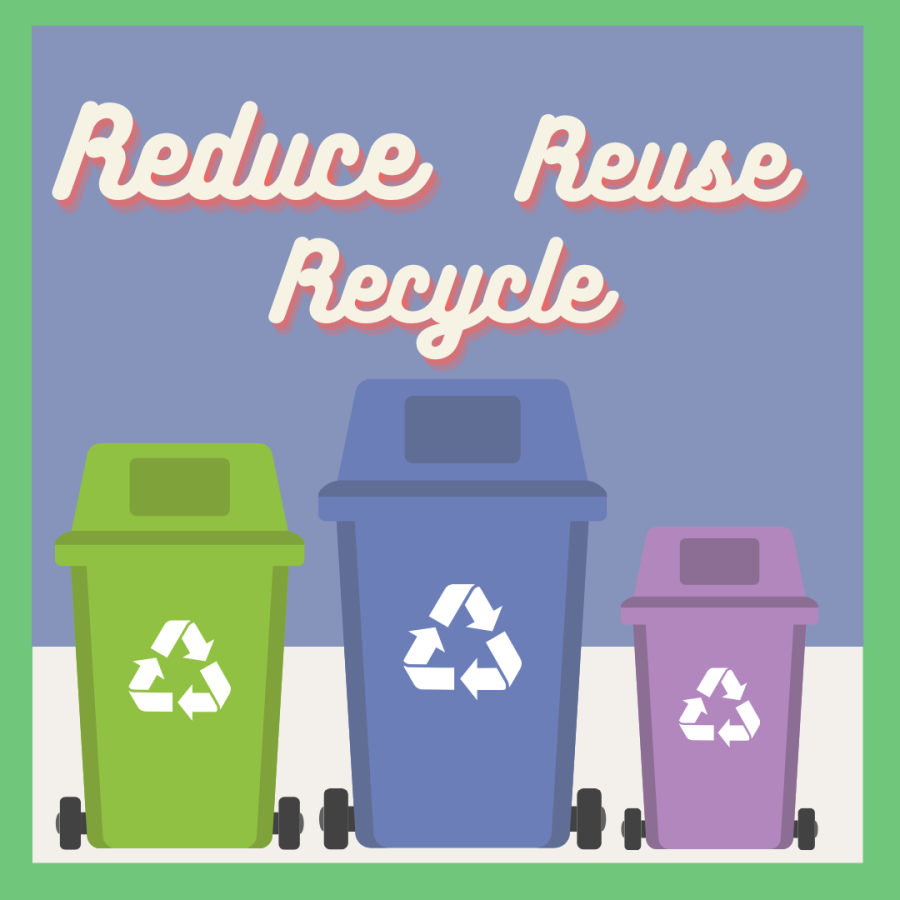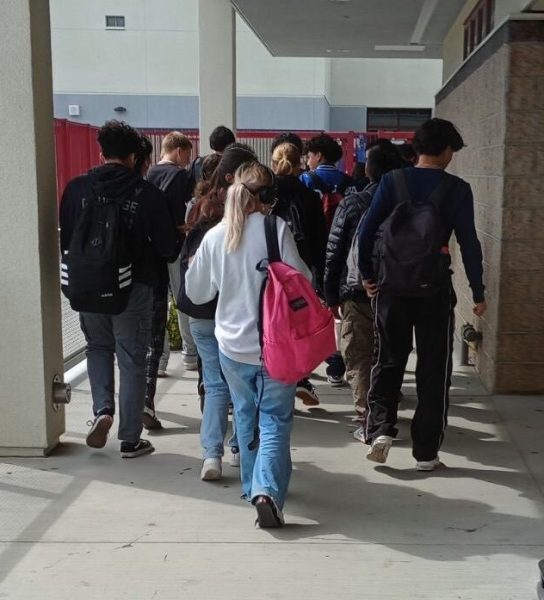If reduce, reuse, and recycling is an effective method of protecting our environment
January 31, 2023
Reduce. Reuse. Recycle. All our lives in elementary school those are the three words that we were taught to do to help make our environment a better place. But the issue is as to whether or not we actually follow these rules? How accurate is our knowledge on recycling? Do we know where the recycling actually ends up in our school? The truth is that our “recycled items” end up in the trash can. We are never informed of the negative effects of recycling and why it’s considered “good”. The order of reduce, reuse, and recycling is never clarified when we are taught to recycle nor are the positive and negative effects. We should stop recycling, and here’s why.
The process of producing recycled materials still releases carbon emissions regardless of it being “environmentally friendly” . Environmentally friendly would be not polluting the environment. If everyone in the world did recycle, there would be less carbon emissions that are released compared to extracting raw materials to produce plastics. However, the process of recycling most commonly requires “grind, melt, and extrude it into filament.” (https://www.fastradius.com/resources/recycled-materials-manufacturing/) According to OCSHREDDING, This process can take up to “about 22 million BTUs” for “1 ton of recycled paper” which would be enough energy to keep a house warm during the winter for about 1833 days. The use of energy when recycling is still arguable in comparison to the amount of energy that is being used for raw materials.
However, many may argue that recycling is the better option and the better first step to take because it still decreases the amount of carbon dioxide released compared to raw materials and uses less energy in comparison to raw materials. People also may argue that less recycling may result in a loss of jobs, however just because reusing is promoted, it does not guarantee that people will lose their job as there will still be much to do in the recycling industry. These points are very common when defending the idea of recycling which I disagree with to an extent as there is an overall bigger picture that has yet to be realized by the world.
I believe that comparing recycling to raw materials is the wrong answer because people still don’t realize that recycling takes a lot of energy and time. The only beneficial part about recycling is that it creates more jobs for the labor force to participate in, however, would not overall be beneficial for our planet. Looking at the overall scale would be the better solution which is why instead of trying to lower emissions step by step, we should skip to the more efficient solution that would result in no carbon dioxide. Of course if there are unusable recyclable materials, it would be better to recycle than to throw away, but we should be mindful to not recycle before reusing our items.
There are various detrimental effects that come with excessive carbon emissions such as endangerment of marine life from the increase in acidity to the ocean, climate change, higher prone to diseases from air pollution, increase in spontaneous weather (droughts, floods, etc.), breaking the ozone layer leaving humans more vulnerable to skin cancer, and etc. Increases in overall temperatures cause glaciers to melt which decreases land surrounding oceans and endangers animals that rely on these glaciers for habitat.
Instead of prioritizing recycling, we should first prioritize reusing our recyclable materials. For example, a mason jar that was used for tomato sauce can be reused as a cup or to hold other items such as pickled vegetables, candy, etc. This solution would decrease the amount of carbon emissions released into the atmosphere from producing recycled products and raw material products. The solution of reusing before recycling would help to slow down climate change as less carbon dioxide is being trapped into the atmosphere with greenhouse gasses.
The better solution is evident in helping our environment become a safer habitat for humans to live in for many years to come. It is always important to remember that reusing is a priority that comes before recycling.


![Even though all juniors must take the CAASPP test, not everyone takes it seriously despite incentives. “I think that weve tried our best to stress the importance of the test, so hopefully that is coming across within [students] own attitudes towards [the CAASPP], English 10 Honors and AP Language teacher Mrs. Alexis Sjol said.](https://ayalabulldogtimes.org/wp-content/uploads/2024/04/IMG_8177.jpg)




![[Photo Essay] What your phone case says about you](https://ayalabulldogtimes.org/wp-content/uploads/2024/04/Untitled_Artwork-22-1200x882.png)










![Khalea Turningan has recently signed with the University of La Verne, to continue playing soccer after she graduates from Ayala. “Ive enjoyed [soccer] so much that I committed,” Turnigan said.](https://ayalabulldogtimes.org/wp-content/uploads/2024/02/Screenshot_20240201_122135_Instagram.jpg)
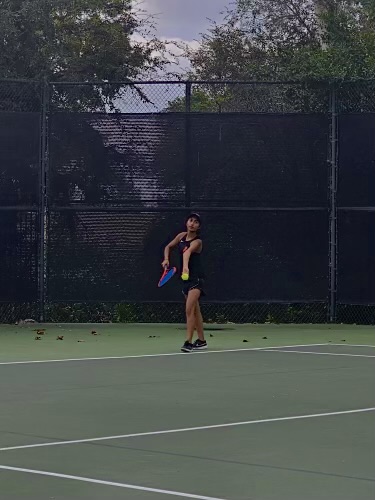










![Girls golf team at Glendora Country Club after their victory against Glendora High School. [From left] Lin Xu (9), Elisabeth lee (10), Eva Alcantara (10), Julie Zhao (9), Madison Soong (10), Priya Devine (10), Rachel Lee (9), Bella Campagna (12), Malaya Csupak (12), Julianna Limchu (12), Kailyn Dang (11), Hannah Reyes (11).](https://ayalabulldogtimes.org/wp-content/uploads/2023/11/IMG_6906-e1699247144815-1200x871.jpeg)











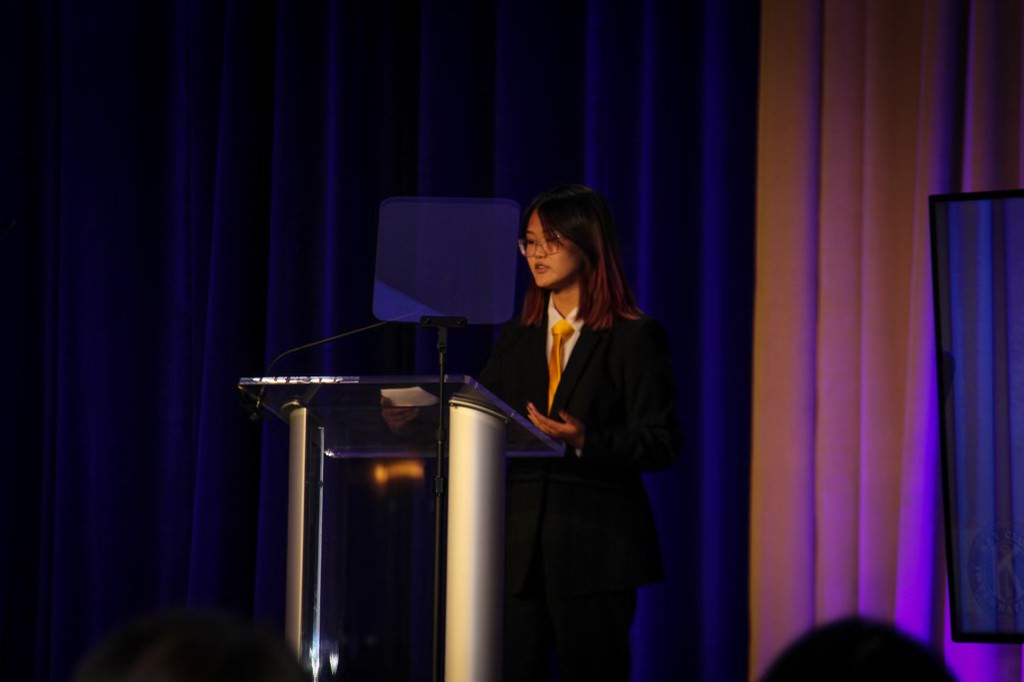


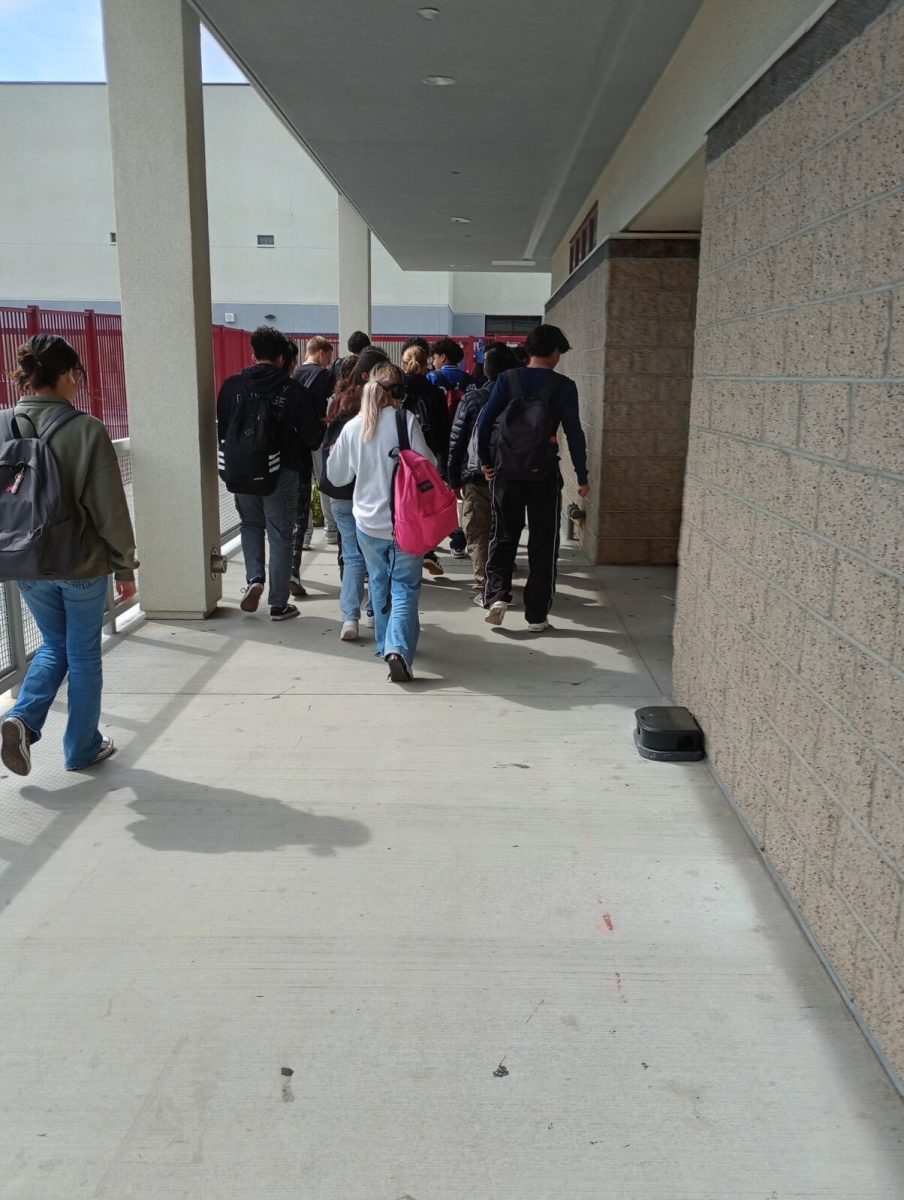



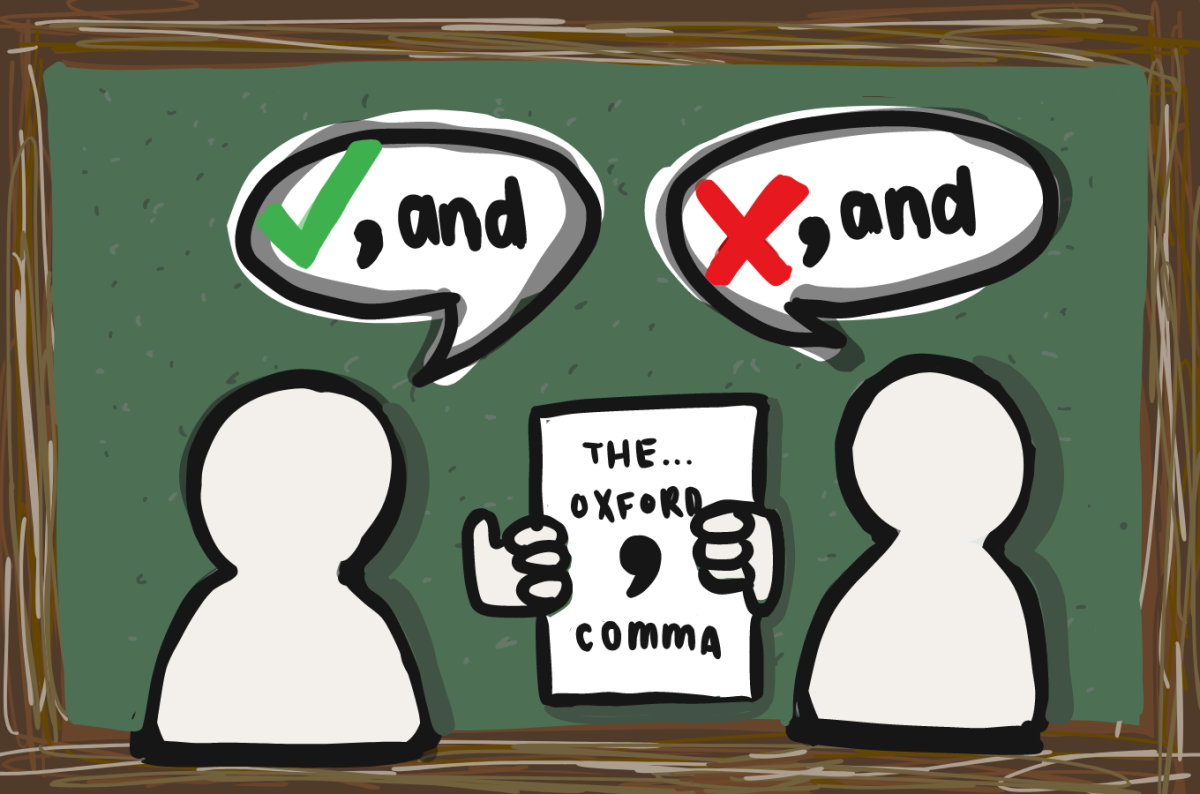



![[Valentines Writing Comp 24] How Dare You?](https://ayalabulldogtimes.org/wp-content/uploads/2024/03/IMG_1687-1200x794.png)
![[Valentines Writing Comp 24] Roses and Violets: A Modern Love Letter](https://ayalabulldogtimes.org/wp-content/uploads/2024/03/IMG_1686.png)




![[Playlist] Year 4](https://ayalabulldogtimes.org/wp-content/uploads/2023/11/Screenshot-2023-11-28-9.31.43-PM.png)
![[Episode 2] Fast fashion on the environment](https://ayalabulldogtimes.org/wp-content/uploads/2023/04/cover-art-1-900x900.png)


